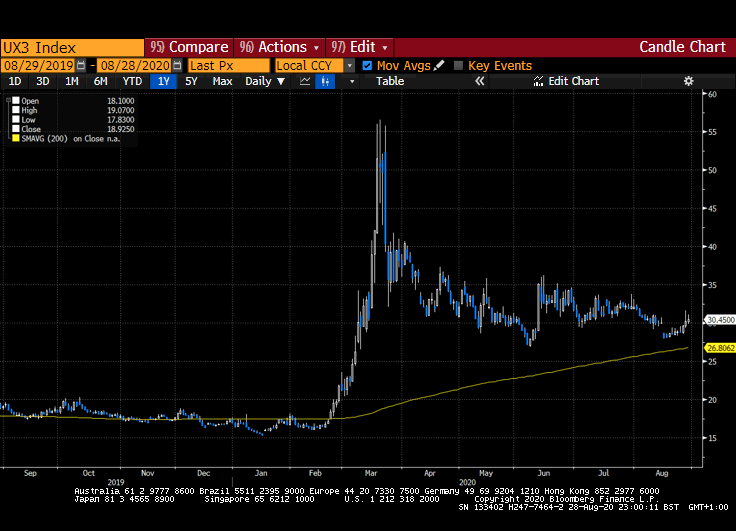Volatility Markets Brace for Election Drama Like Never Before
This article by Katherine Greifeld and Liz Capo McCormick for Bloomberg may be of interest to subscribers. Here is a section:
Traders across major asset classes are sending the same message: Prepare for what could be the most-contentious U.S. presidential elections in decades.
One measure of hedging in the stock market is higher than at any point in the past three presidential elections. In the interest-rates market, implied volatility is well above levels reached in 2016 or 2012. And three-month implied volatility in the dollar-yen pair -- a classic haven trade -- has risen above the two-month tenor by the most in two decades, signaling demand for protection from turbulence near Election Day.
Trades protecting against election-induced volatility have been around all year, with “unprecedented” levels of hedging seen as early as January. Yet the potential for drama has only grown since then as the coronavirus leaves the U.S. mired in a recession and President Donald Trump rages against mail-in voting, raising concerns about a prolonged dispute over vote tallies. That uncertainty is complicating more conventional topics, such as how the results will affect tax policy and the trade war with China.
“You have a global pandemic as your backdrop, which speaks for itself, and then you have a president that’s in a term, volatile, and you have the things going on with the Postal Service,” said Zachary Griffiths, a rates strategist at Wells Fargo. “All these factors that don’t typically play into an election are impacting things now and that’s clearly got people concerned. And vol has bid up tremendously in rates and equities.”
Veteran election watchers will remember the hanging chads of 2000 which were key to deciding the outcome of the Florida count and the US election. George W. Bush’s victory came down to 500 votes and it was possibly helpful that his brother was the state’s governor.
It is looking likely that a large number of people are preparing to vote by mail in 2020. The US Postal Service is in no way prepared to handle that volume of mail. Right now, they are short staffed. Whether that is through absenteeism or not, there are already long lines at post offices.
The increased online sales have led to a jump in volumes at the post office. Packages are being delayed because they are being routed all over the country before being delivered. That means packages which would normally be expected to arrive in 5 days are taking around 3 weeks. That’s before millions of people attempt to vote by mail.
Many states have rules that disallow votes that arrive late. Others don’t supply mail-in ballots until quite close to the election date. Additionally, it takes a long time to count mail-in ballots. That suggests the best-case scenario is it will be weeks before the result is announced and, even then, there are likely to be tens of court cases disputing results all over the country.

It therefore makes sense that October/November volatility should be pricing higher. A sustained move above 35 on the November future would signal the market is beginning to take this threat more seriously.


